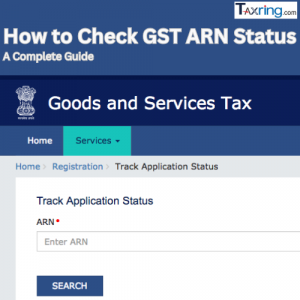
Check Your Income Tax Refund Status FY 2023-24 (AY 2024-25)
If you've paid more taxes than required, you're entitled to a refund for the excess amount. The Income Tax Department provides an online platform for tracking your Income Tax Refund status. Simply enter your PAN (Permanent Account Number) and the relevant Assessment Year to monitor the progress of your refund effortlessly.
Here are some important points to note:
- Tax refunds are processed once your return is e-verified.
- Typically, it takes 4-5 weeks for the refund to be deposited into your bank account.
- If you haven't received your refund within this timeframe, consider the following steps:
- Check your ITR for any discrepancies or errors (Log in to the e-filing portal > e-File > Income Tax Returns > View filed returns).
- Monitor your email for notifications from the Income Tax department regarding the status of the refund.
- Utilize the methods provided below to check the refund status.
How to Check your ITR Refund Status for FY 2023-24?
Learn how to check your ITR Refund Status for FY 2023-24 easily. You have two options:
1. Visit the TIN NSDL website.
2. Access the Income Tax e-filing portal
Check your Refund Status on the TIN NSDL Portal
1. Visit the online refund checking facility.
2. Scroll down and input your PAN, AY, captcha.
3. Click 'Submit'
Refund Status check on Income Tax e-filing Portal
Step 1: Visit the income tax portal and log in to your account
Step 2: Click on 'e-File', choose 'Income Tax Returns' and then select ‘View Filed Returns’
Step 3: You can see the status of your current and past income tax returns.
Step 4: Click on 'View details' and you'll see the status of your income tax refund, like in the picture below.
If you've paid more taxes than required, you're eligible to claim the excess amount as income tax refund.
Income Tax Refund Calculation:
Refund = Taxes paid (Advance Tax, TDS, TCS, or Self-Assessment Tax) – Total tax liability on the current year income.
If the total taxes paid exceed the actual tax liability, the surplus amount can be claimed as a refund. The income tax department will verify the claim before processing the refund.
For instance, if Mr. Gupta paid 3 lakh as advance tax during the financial year and discovers his tax liability is only 2 lakh by year-end, he can file an income tax return (ITR) to request a refund. Upon approval, the excess tax amount of 1 lakh will be credited to Mr. Gupta's pre-validated bank account.
Claiming an income tax refund is straightforward:
1. File your Income Tax Return (ITR) with the Income Tax Department.
2. Declare your income, deductions, and tax paid details accurately.
3. The refundable amount is calculated and displayed in your tax return."
You have to finish e-filing to get your Income Tax Refund. Make sure to e-file this year to get your tax refund faster.
Have you e-filed your tax return for this year?
If not, you can do so easily on Taxring. We guide you through every step, even if you're new to taxes.
I want to e-File my Income Tax Return
Do you require a CA's assistance with your Tax Return?
With our CA Assisted plan, our experts will guide you through the process and resolve any concerns you have. Let us help you e-File with confidence.
I want an expert to help me e-File
Missed the ITR filing deadline? Don't worry, you can still claim your refund.
Even if you missed the July 31st, 2024 deadline for non-audit cases, you can file a belated return until December 31st, 2024, and still claim your tax refund.
How long will it take to get the refund?
The duration for entering the income duty refund is primarily determined by the internal processes of the Income Tax Department. generally, it takes between 7 to 120 days, with a normal of 90 days after-verification of your return. Lately, the Income Tax Department introduced a new refund processing system aimed at expediting refunds, with an anticipated reversal of just a few days. As a result, the average processing time for ITRs has significantly dropped to 10 days for returns filed in AY 2023- 24, compared to 82 days for AY 2019- 20 and 16 days for AY 2022- 23 cessions
Where is my itr refund?
The Income Tax Department disburses refund amounts either through electronic mode (direct credit to the account) or via a 'Refund Cheque'. To ensure timely receipt of refunds, it's essential to provide accurate bank account details, including the correct bank account number, IFSC code, and complete address details with the PIN code when filing your return. Refunds dispatched through cheques are sent to the address specified in the ITR via speed post.
How is the interest on income tax refund calculated?
If the refund amount exceeds 10% of the total tax payable for the specific year, you are entitled to receive simple interest on the tax refund. The interest rate is calculated at 0.5% per month on the refund amount. This interest accrues from the beginning of the next financial year until the refund date.
Is the income tax refund taxable?
No, the refund amount itself is not taxable. However, the interest earned on the tax refund is taxable, and the applicable tax rate depends on your tax slab.
Is there an income tax refund helpline?
For inquiries regarding income tax refunds, you can contact the 'Aaykar Sampark Kendra' at the toll-free helpline: 1800-180-1961 or email refunds@incometax.gov.in.
For refund-related queries or modifications processed at CPC Bangalore, call 1800-425-2229 or 080-43456700.
For payment-related queries, contact the SBI Contact Centre toll-free at 1800-425-9760.
Understanding Your Refund Status income tax login:
Your refund status communicates various scenarios, such as:
1. No e-filing has been done for this assessment year.
Interpretation:
This indicates that your income tax return might not have been filed for this specific assessment year.
Next Steps:
1. Double-check that you're assessing the refund status for the correct Assessment Year. Remember, Financial Year (FY) 2022-23 corresponds to Assessment Year (AY) 2023-24.
2. If you haven't filed your return, consider e-Filing your tax return using Cleartax. Alternatively, seek guidance from a tax expert who can assist you in preparing and filing your return.
Under processing
What does this mean?
This means that the income tax department has still not processed your income tax return. Please check your refund status after a month to see if it has been updated.
Refund issued?
What does this mean?
This indicates that the income tax department has disbursed the refund to you, either by cheque or through direct debit to the bank account number provided during e-filing.
Processed with no demand no refund
Step 1. What does this mean?
This status could signify two scenarios:
1. You filed with neither a refund nor any tax due, which means your tax affairs are in order for the current year.
2. Alternatively, you might have requested a refund, but the income tax department rejected it due to discrepancies between their calculations and yours. This can occur due to TDS data mismatches or incomplete/inaccurate information provided in the original filing.
Step 2. What do I do now?
If you overlooked certain deductions during filing, consider revising your return.
Read the Taxing guide on revising your Income Tax Return.
In cases where the income tax department disputes the information you provided, they would have issued an intimation under section 143(1) outlining the discrepancies. You can rectify these errors and file a rectification to support your refund claim.
Seek assistance from an expert who can review your tax notices and returns to provide the best guidance. An expert can also assist you in filing a rectification.
Refund Failure?
Step 1. What does this mean?
This status suggests that the bank account details (account number or IFSC Code) provided to the I-T department are incorrect or not pre-validated, resulting in the refund not being processed.
Step 2. What should you do now?
Login to income tax.gov.in, update the correct bank details with the I-T department, and prevalidate them. Once your bank account is pre-validated, apply for a 'Refund Reissue' from your e-filing account.
Case transferred to Assessing Officer
Step 1. What does this mean?
This status typically indicates that the Income Tax department requires further clarification or information regarding the income tax return you filed. The Assessing Officer may need to discuss the matter with you. In some instances, it could also signify outstanding taxes with the IT department, which may offset the tax refund requested.
Step 2. What should you do now?
Upon receiving this notification, contact the AO (Jurisdictional Assessing Officer) for your region. Click here to find details about your AO.
Demand determined?
Step 1. What does this mean?
This status indicates that your refund request has been denied, and the IT department has determined that you owe unpaid taxes instead. You may have received a notice detailing the outstanding tax amount and reasons for the same. This can occur due to incomplete or inaccurate tax details provided in the original return or discrepancies in income information or TDS.
Step 2. What should you do now?
Carefully review the intimation from the IT department to identify any errors. Cross-check your e-filing records to ensure accuracy. If you find errors in your refund request, pay the demanded tax within the specified time frame. If you believe the IT department made an error, update your information if necessary and file a rectification to support your refund claim. Consider connecting with a tax expert to guide you through this process.
Rectification processed refund determined?
What does this mean?
This status is applicable to taxpayers who received a notice to rectify their original returns. The IT department has processed the rectification, and based on this, has calculated and credited the refund amount.
Rectification processed demand determined?
What does this mean?
Similar to the previous status, this applies to taxpayers who received a notice to rectify their original returns. However, the IT department maintains that outstanding unpaid taxes are due. You will receive a notice specifying the exact amount outstanding, which must be paid within 30 days.
Rectification processed no demand no refund?
What does this mean?
This status is for taxpayers who received a notice to rectify their original returns. Based on the rectification, the IT department determines that neither additional taxes are owed nor is a refund applicable. You will receive a revised intimation confirming this outcome. Consider seeking assistance from a tax expert to guide you through this process. They can help you file a rectification if necessary.
Related Articles:




